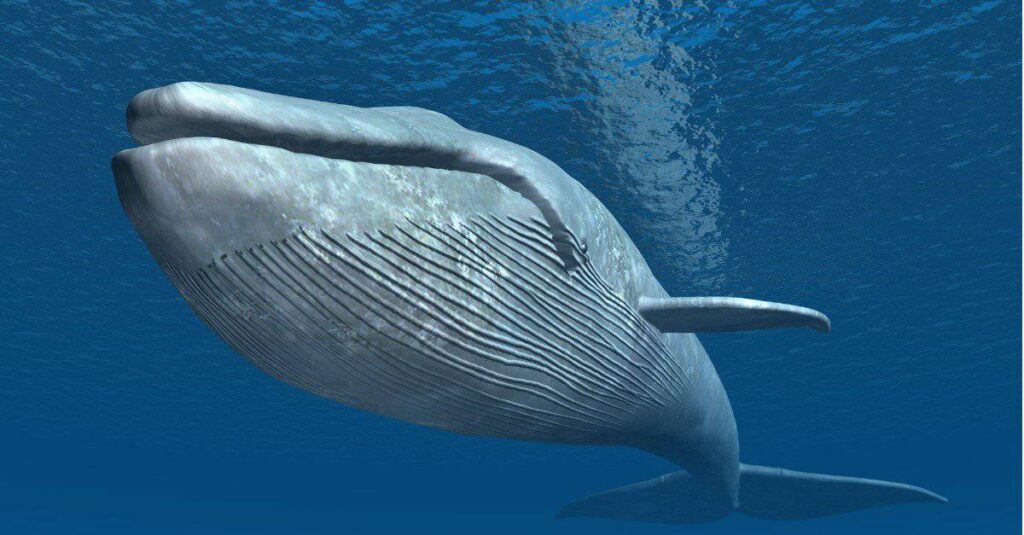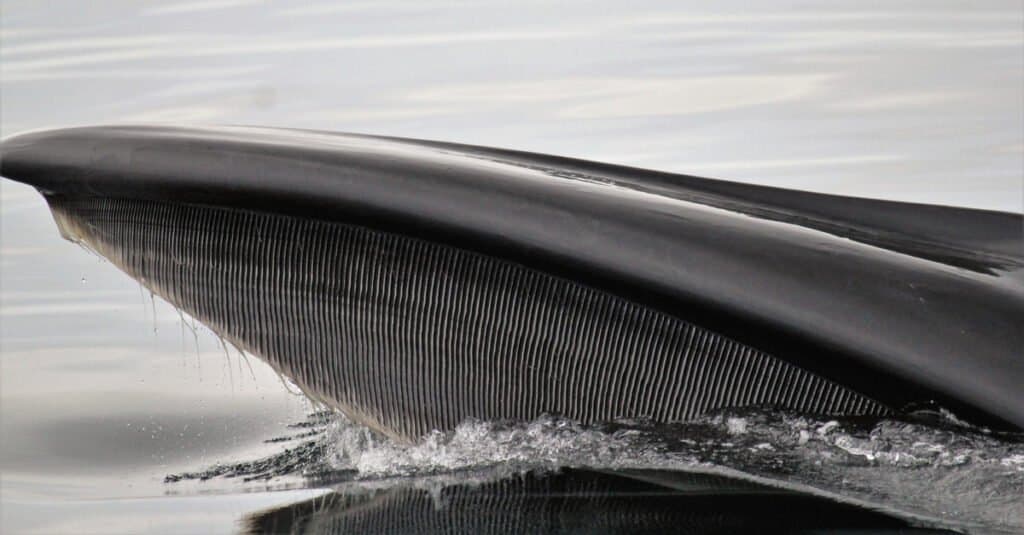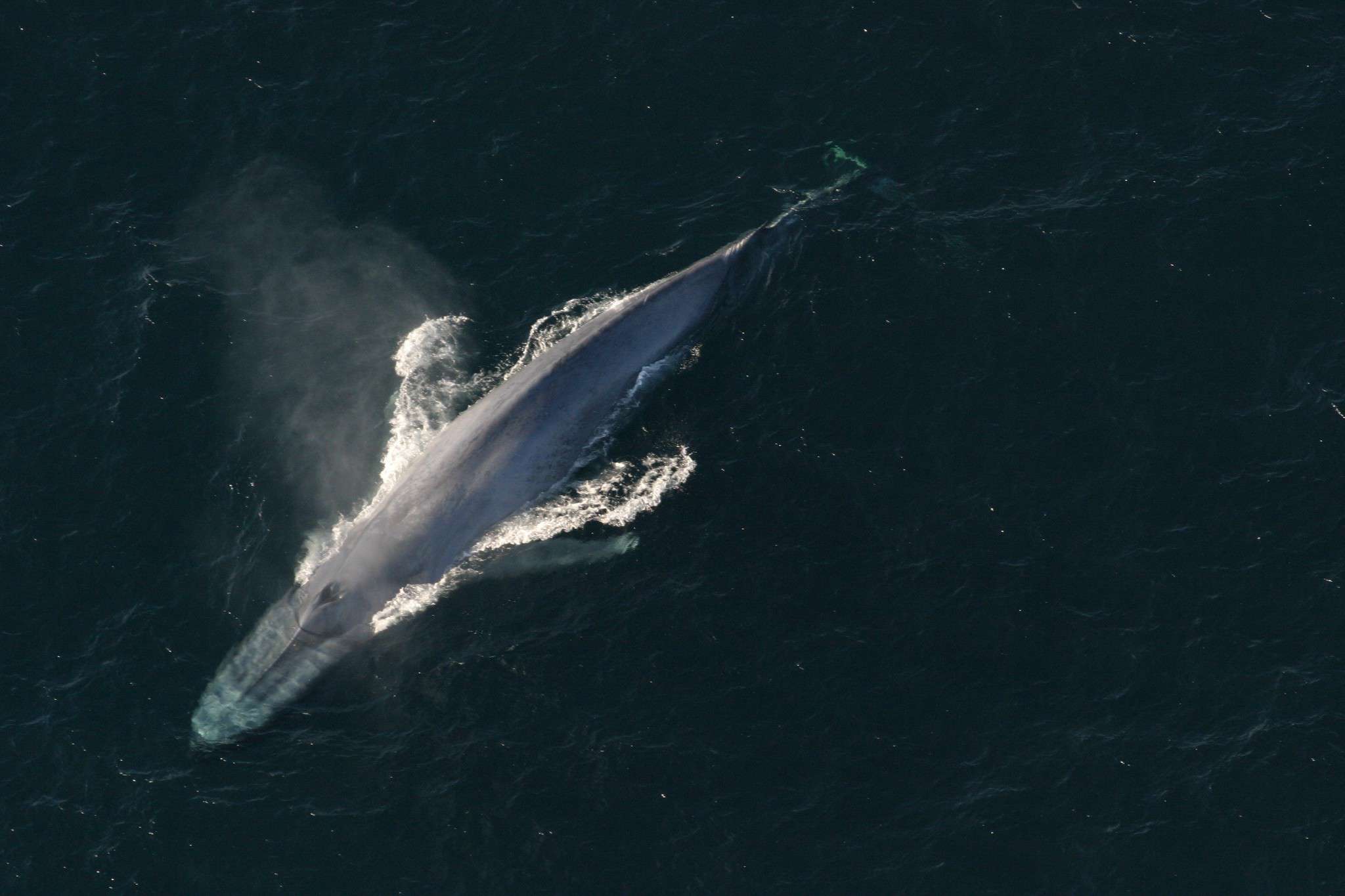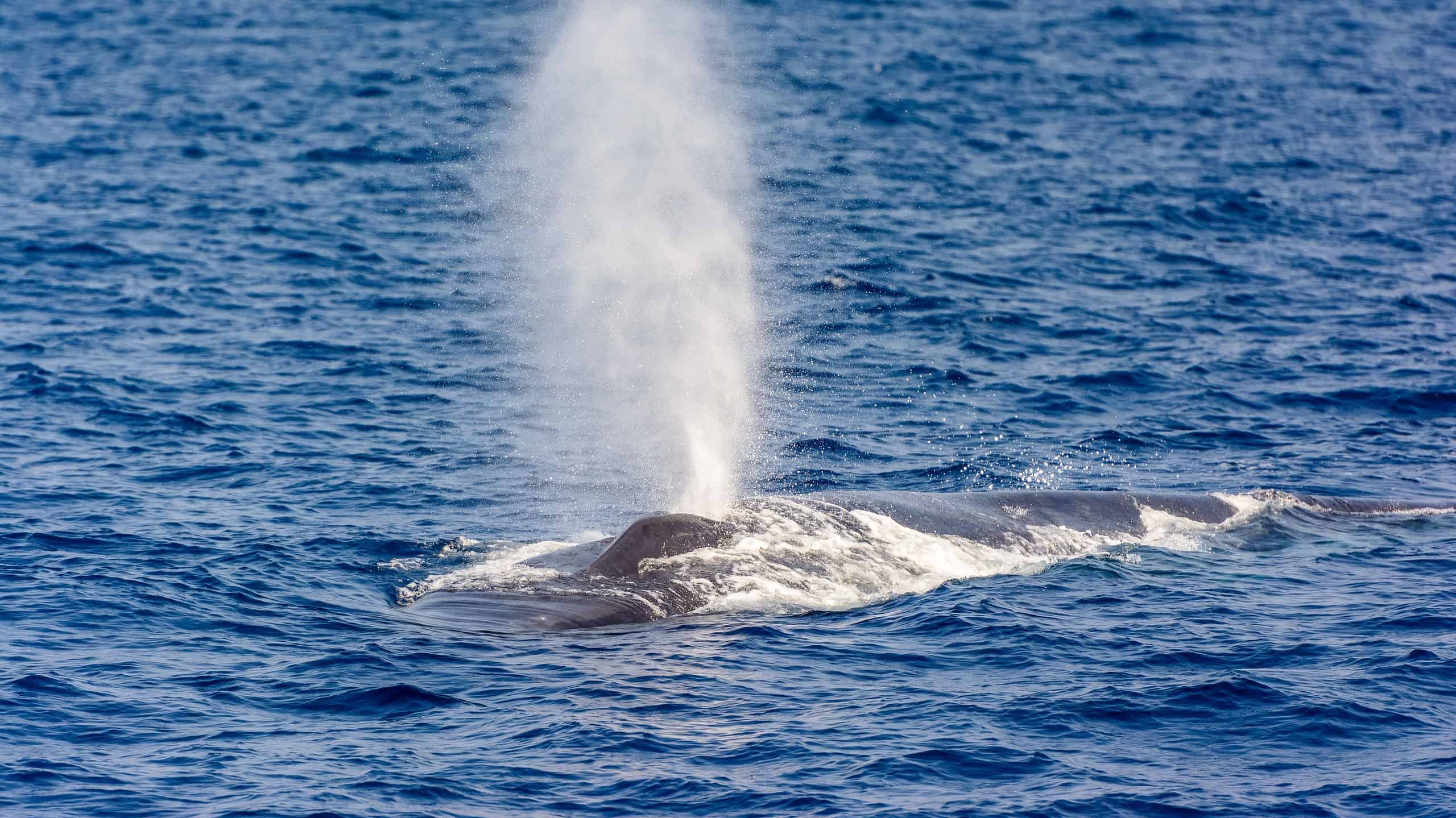When the animal that you are looking at is bigger than the boat you are standing on, you know that you are in the company of a blue whale. In this clip, a massive but majestic creature passes peacefully underneath a boat full of whale watches. It delights everyone on board and then heads out into the ocean. Click below to see the full awesome footage and appreciate just how big these monsters are!
Watch the Majestic Footage Below
Where Do Blue Whales Live?

Blue whales have baleens (filters) instead of teeth.
©Andrea Izzotti/Shutterstock.com
The blue whale (Balaenoptera musculus) is a member of the Balaenopteridae family of whales. They are found in oceans all over the world – from the icy waters of the poles to the warmer waters of the tropics. They live in the open ocean so you normally have to go into deep water to spot them. Having been on the edge of extinction in the 1960s experts now think that populations are recovering. However, the species still faces considerable challenges. Blue whales are still listed as endangered, and there are between 5000 and 15,000 mature individuals alive in the world today.
How Big Are Blue Whales?

If you line up three school buses, they are the length of a 100-foot-long blue whale.
©iStock.com/MR1805
Blue whales are the largest animal that has ever existed on Earth. They are larger than the dinosaurs! Their weight is measured in hundreds of thousands of pounds – the average weight is 418,502.20 pounds. Their length can be up to 109 feet.
The rest of their appearance is pretty unremarkable. They are a slate or grayish-blue color with mottling on their back and shoulders.
If you ever get to see a blue whale from underneath, you will notice that its belly has a yellowish tinge, and this is because it is covered in microorganisms. The dorsal fin is relatively short, and they have noticeable grooves that extend from their chin to their naval.
Are Blue Whales Dangerous to Humans?

The mighty blue whale is not a threat to humans. However, humans are the biggest threat to blue whales.
©Sharlyn/Shutterstock.com
Blue whales are not carnivores or predators. They are not aggressive and do not attack other animals, including humans. These whales feed by filtering water through their fibrous baleens. Even though they are huge, their diet is made up of very small animals, including krill. There is a very small chance that human boats could get knocked out of the water by a large whale. Having said that, whales are more often injured by vessel strikes than humans!
Normal Behavior of Blue Whales

The largest blue whale ever recorded was captured in 1947 and weighed 418,878 pounds.
©NOAA Photo Library / CC BY 2.0, Flickr – Original / License
Blue whales are generally solitary creatures but can be found in groups of up to three or four in the seasonally rich waters of the open ocean. Their diet consists mainly of small, shrimp-like krill, which they filter with their baleen plates to strain out the food.
Blue whales reproduce in a process known as “delayed implantation,” whereby the female will mate with one or more males and store the sperm until the conditions are ideal for her to become pregnant. She will then give birth to a single calf, which will stay with her for up to two years.
It is not normal for blue whales to swim beneath fishing boats or be curious about humans. In fact, they will usually keep their distance from vessels. Blue whales are typically shy and gentle and prefer to remain in the ocean’s depths where they feel safe.
Thank you for reading! Have some feedback for us? Contact the AZ Animals editorial team.








